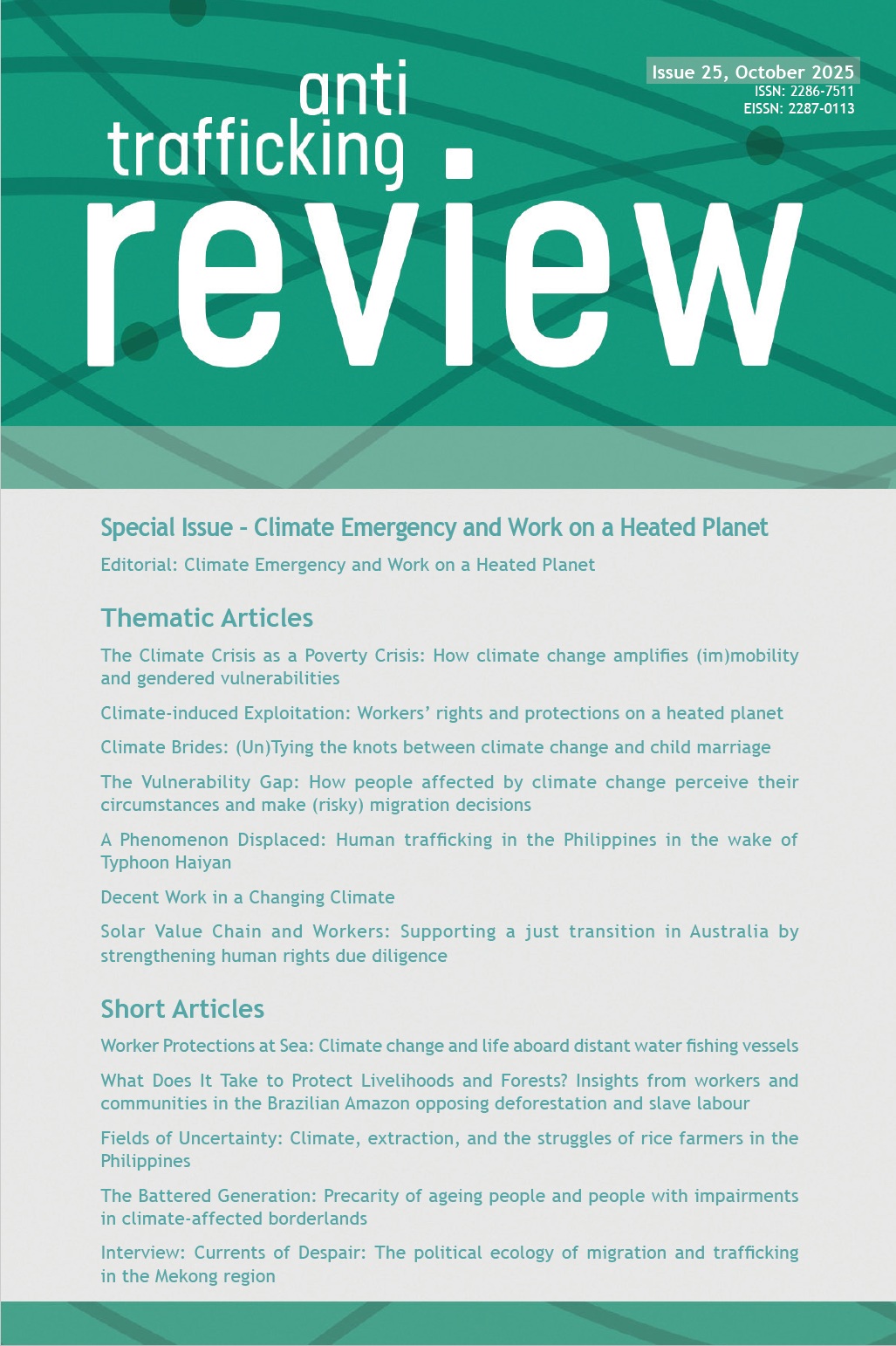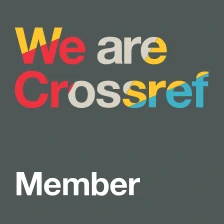What Does It Take to Protect Livelihoods and Forests? Insights from workers and communities in the Brazilian Amazon opposing deforestation and slave labour
DOI:
https://doi.org/10.14197/atr.2012252510Abstract
In this short article, we explore what needs to be in place for the workers and communities in the Brazilian state of Amazonas to resist slave labour in areas that have recently opened up routes to deforestation, cattle ranching, and mining. Drawing from community-based work in several remote locations in Amazonas state, including individual interviews and discussions with community groups, we argue that long-term work by trusted local organisations, aiming to curb structural violence at community level, is vital, enabling local residents to visibilise the problem of forced labour and slavery-like practices and prompt actions by statutory bodies to protect workers and the environment.
Metrics
Published
How to Cite
Issue
Section
License
Copyright (c) 2025 Anti-Trafficking Review

This work is licensed under a Creative Commons Attribution 4.0 International License.
The Anti-Trafficking Review has a policy of licensing under the Creative Commons Attribution License (CC-BY). Under the CC-BY license, the public is free to share, adapt, and make commercial use of the work. To protect our work and that of our authors, however, users must always give proper attribution to the author(s) and the Anti-Trafficking Review (i.e. with a complete bibliographic citation and link to the Anti-Trafficking Review website and/or DOI).
The Anti-Trafficking Review promotes the sharing of information, and we therefore encourage the reproduction and onward dissemination of articles published with us.








